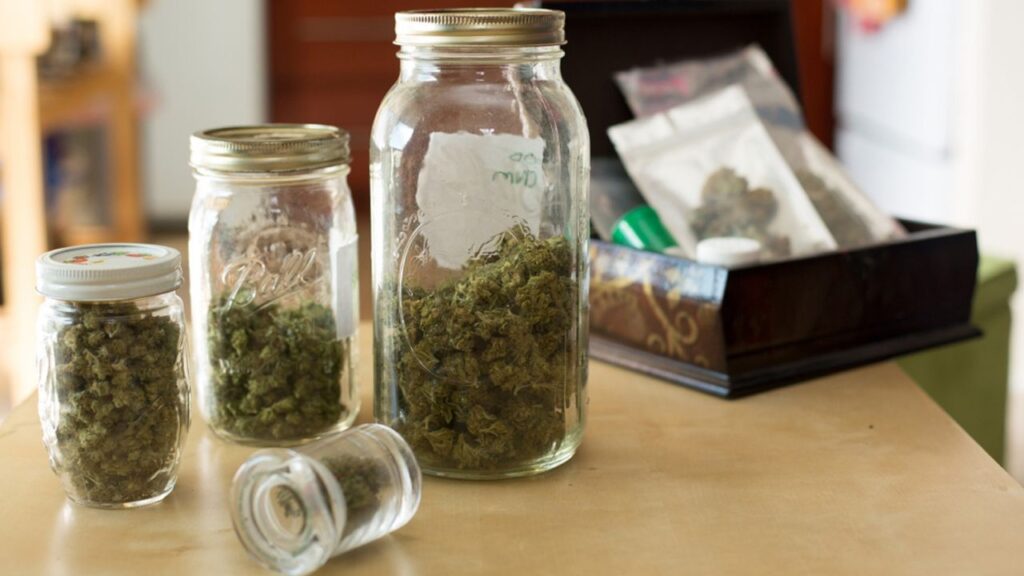Autoflower cannabis strains have become increasingly popular among growers for their fast growth, compact size, and ability to flower without relying on light cycles. These strains are ideal for both beginners and experienced cultivators seeking quicker harvests and multiple cycles per season. Unlike photoperiod strains, autoflowers transition from the vegetative to flowering stage automatically, usually within just a few weeks.
A proper feeding schedule is crucial to support this rapid development. Since autoflowers have a shorter lifecycle, any nutrient imbalance can significantly impact their growth and yield. Feeding the right nutrients at the right time helps maximize bud production, improve plant health,autoflower weed feeding schedule, and prevent common issues like nutrient burn or deficiencies.
This blog post aims to guide you through the best feeding practices tailored for autoflower cannabis. You’ll learn what nutrients to use, when to feed, and how to avoid common mistakes, ensuring a healthy and high-yielding grow every time.
Understanding Autoflowering Cannabis
A. Definition and Characteristics
Autoflowering cannabis is a type of cannabis plant that automatically switches from the vegetative stage to the flowering stage based on age, not light cycles. These strains are typically derived from Cannabis ruderalis, a subspecies known for its hardiness and quick flowering time. Autoflowers are compact, resilient, and ideal for discreet or space-limited growing. Most varieties complete their entire lifecycle in 8–12 weeks, making them perfect for multiple harvests in a single season.
B. Growth Cycle and Life Stages
Autoflowers typically go through three main stages: germination (3–7 days), vegetative growth (2–4 weeks), and flowering (5–7 weeks). Because the vegetative phase is shorter than in photoperiod strains, growers must support fast, healthy growth early on. Once flowering begins, plants focus on bud development until harvest. There is no need to adjust lighting schedules, as they bloom under 18–24 hours of light.
C. Differences Between Autoflowering and Photoperiod Strains
Photoperiod strains require specific light schedules (usually 12 hours of light and 12 hours of darkness) to trigger flowering. In contrast, autoflowers begin flowering automatically after a set period, regardless of light. While photoperiods often yield larger harvests, autoflowers are faster, easier to manage, and more suitable for beginners or quick cycles.
Nutritional Needs of Autoflowering Plants
A. Essential Nutrients for Growth
Autoflowering cannabis plants require a balanced mix of nutrients to support their fast-paced growth. The three primary macronutrients—nitrogen (N), phosphorus (P), and potassium (K)—are vital. Nitrogen supports leaf and stem growth during the vegetative stage. Phosphorus is essential for strong root development and flower production. Potassium enhances overall plant health, autoflower weed feeding schedule, helping with water uptake, enzyme activation, and bud formation. Additionally, calcium, magnesium, and sulfur play supportive roles in structure and photosynthesis.
B. Macronutrients vs. Micronutrients
Macronutrients are needed in larger quantities and include N-P-K, along with secondary nutrients like calcium and magnesium. Micronutrients—such as iron, zinc, manganese, boron, copper, and molybdenum—are required in small amounts but are still crucial. These help with enzyme function, chlorophyll production, and various metabolic processes. A deficiency in either group can cause stunted growth or poor yields.
C. Importance of pH Levels in Nutrient Absorption
Maintaining the correct pH level in your water and soil is critical for nutrient uptake. For soil, a pH of 6.0–7.0 is ideal; for hydroponics or coco coir, aim for 5.5–6.5. If pH levels are too high or too low, plants can experience “nutrient lockout,” where essential nutrients become unavailable even if they’re present.
Creating an Autoflower Feeding Schedule
A. General Timeline for Feeding
Autoflower feeding schedules should align with their fast growth cycle. In the first week (seedling stage), minimal nutrients are needed—start with plain water or a light root booster. Weeks 2–4 (vegetative stage) require increased nitrogen to support leaf and stem growth. By week 5, flowering typically begins, and feeding should shift to higher levels of phosphorus and potassium, with lower nitrogen. Continue bloom nutrients through week 8 or 9, then flush with plain water in the final week before harvest.
B. Adjusting Feeding Based on Growth Stages
During the vegetative stage, prioritize nitrogen-rich nutrients. Once pre-flowering starts, reduce nitrogen and increase phosphorus and potassium. Autoflowers don’t recover as well from overfeeding due to their short lifecycle, so always start with half-strength doses and gradually increase as the plant shows a positive response. Use feeding charts as a guide, but always observe your plant’s behavior.
C. Signs of Nutrient Deficiencies and Excesses
Yellowing leaves can signal nitrogen deficiency, while purpling stems may indicate a lack of phosphorus. Brown leaf edges suggest potassium deficiency. Overfeeding can cause leaf burn, dark green foliage, and nutrient lockout. Always monitor leaf color and shape, and adjust feedings accordingly to avoid stressing your plants.

Autoflower Feeding Schedule for Soil
A. Recommended Nutrient Ratios
For soil-grown autoflowers, use nutrient ratios that match each growth stage. During the vegetative phase, a ratio around 3-1-2 (N-P-K) promotes healthy leaf and stem development. When flowering begins, switch to a bloom formula like 1-3-2 or 0-5-3, prioritizing phosphorus and potassium for strong bud formation. Always check your product label for exact values, and avoid overloading with nitrogen once flowering starts.
B. Frequency of Feeding
Feed autoflowers in soil every other watering, typically once or twice a week, depending on plant size and soil condition. Start with half-strength nutrients and gradually increase if no signs of nutrient burn appear. Overwatering or overfeeding can harm autoflowers quickly, so allow the top inch of soil to dry out between waterings and always observe plant response.
C. Organic vs. Synthetic Nutrients
Organic nutrients release slowly and improve soil health over time. They’re ideal for growers seeking a natural, low-risk approach. Compost teas, worm castings, and bat guano are common organic options. Synthetic nutrients offer faster, more precise feeding and are easier to adjust, but they can build up salts in the soil. Choose based on your experience level, desired results, and growing goals.
Autoflower Feeding Schedule for Hydroponics
A. Differences in Nutrient Delivery
In hydroponic systems, nutrients are delivered directly through water, bypassing soil altogether. This gives growers precise control over feeding but also demands more attention to detail. Autoflowers in hydroponics absorb nutrients more efficiently, which can speed up growth, but it also means any imbalances or mistakes can affect the plant quickly. Feeding must be carefully managed to match each stage of the plant’s life.
B. Specific Nutrient Solutions for Hydro
Use hydroponic-specific nutrient lines that are fully water-soluble. During the seedling phase, start with a very mild nutrient mix (around 200–300 ppm). In the vegetative stage, increase nitrogen using a solution with a higher N value (e.g., 3-1-2). As flowering begins, switch to a bloom formula rich in phosphorus and potassium (e.g., 1-3-2 or 0-5-4). Always refer to the manufacturer’s feeding chart and adjust based on plant response and growth rate.
C. Monitoring Water Quality and pH Levels
Clean water and stable pH are crucial in hydroponics. Aim for a pH of 5.5–6.5 for optimal nutrient uptake. Use a TDS (Total Dissolved Solids) meter to track nutrient concentration (ppm) and change your nutrient solution weekly to prevent salt buildup and bacteria. Consistent monitoring ensures healthy growth and strong yields.
Nutrients for Autoflower Cannabis
A. Recommended Brands and Products
Several nutrient brands are well-suited for autoflower cannabis. Top choices include Fox Farm, known for its easy-to-follow trio system; General Hydroponics, ideal for hydro and soil grows; Advanced Nutrients, which features pH-perfect technology for stability; and Biobizz, a favorite for organic growers. Each brand offers nutrient lines tailored for different growth stages—vegetative and flowering, making feeding schedules easier to follow.
B. Importance of Balanced Nutrient Solutions
A well-balanced nutrient solution ensures your autoflower receives all essential macro and micronutrients. Overfeeding or underfeeding can result in stunted growth, nutrient lockout, or poor bud development. Always match nutrient ratios to the plant’s current stage (higher nitrogen during veg, higher phosphorus and potassium during flowering). Balanced feeding supports healthy roots, lush foliage, and dense buds.
C. Supplements and Additives for Enhanced Growth
To maximize yields, many growers use supplements such as calcium-magnesium (Cal-Mag) for stronger cell walls, silica for stress resistance, and humic/fulvic acids to improve nutrient uptake. Bloom boosters with extra phosphorus and potassium help fatten buds during the flowering stage. Use additives cautiously—start small and observe plant response to avoid overloading the root zone.

Is Miracle-Gro Good for Autoflowers?
A. Overview of Miracle-Gro Products
Miracle-Gro is a popular and widely available fertilizer brand, best known for its all-purpose plant foods and soil mixes. While these products are designed for general gardening, some growers consider using them for cannabis due to convenience and low cost. The brand offers both liquid and slow-release granular fertilizers with high nitrogen content.
B. Pros and Cons of Using Miracle-Gro
The main advantage of Miracle-Gro is its accessibility and ease of use. For beginners, it offers a simple feeding option without the need for complex nutrient schedules. However, there are significant downsides. Most Miracle-Gro products contain high levels of nitrogen, which may benefit the vegetative stage but harm flowering. Slow-release formulas can continue feeding excess nitrogen during bloom, leading to nutrient burn or reduced bud quality. Additionally, Miracle-Gro lacks the precise balance of micronutrients cannabis needs.
C. Recommendations for Autoflowering Plants
While Miracle-Gro can be used cautiously during early vegetative growth, it is not ideal for autoflowers throughout the entire grow. Autoflowers have a short life cycle and need specific feeding at each stage. For best results, choose cannabis-specific nutrients designed for fast-growing plants. If you do use Miracle-Gro, avoid time-release formulas and flush regularly to prevent buildup.
Common Mistakes in Autoflower Feeding
A. Overfeeding vs. Underfeeding
One of the most common mistakes with autoflowers is overfeeding. Because autoflowers grow quickly and are generally smaller than photoperiod plants, they require fewer nutrients. Overfeeding can lead to nutrient burn, causing leaf tips to brown and curl. On the other hand, underfeeding can result in pale, weak plants with poor bud development. The key is to start with half-strength nutrients and gradually increase based on how the plant responds.
B. Ignoring Environmental Factors
Many growers focus solely on nutrients and overlook the environment. Factors like temperature, humidity, and light intensity significantly affect how plants absorb nutrients. For example, poor ventilation can lead to nutrient lockout, while excessive heat may cause plants to drink more water and leave nutrients behind, leading to salt buildup. Always maintain optimal growing conditions to support healthy feeding and growth.
C. Not Adjusting for Growth Stages
Feeding the same nutrient mix throughout the entire grow is a mistake. Autoflowers need different nutrient ratios at each stage—more nitrogen during veg and more phosphorus and potassium during bloom. Failing to adjust can stunt growth or reduce bud quality. Monitoring your plant’s life cycle and adapting your feeding schedule is essential for maximizing yield.
Conclusion
Autoflower cannabis plants offer a fast, rewarding growing experience, but success depends heavily on a proper feeding schedule. Throughout this guide, we’ve covered the essentials—from understanding the unique life cycle of autoflowers to crafting feeding schedules tailored for soil and hydroponic setups. We’ve also discussed nutrient types, pH balance, and common mistakes to avoid.
Every plant is different, so don’t be afraid to experiment and adjust your feeding routine based on your plant’s behavior. Start with light feeding, monitor closely, and fine-tune as needed. Environmental factors like light, temperature, and humidity also play a major role in nutrient absorption, so keep your grow space optimized.
With the right nutrients, consistent care, and a responsive approach, you can unlock the full potential of your autoflower plants. Whether you’re aiming for dense buds or maximum yields, a smart feeding schedule is key to successful, stress-free cultivation.
FAQ:
Autoflower Weed Feeding Schedule?
An autoflower weed feeding schedule outlines when and what nutrients to provide throughout the plant’s short lifecycle. It balances nitrogen, phosphorus, and potassium based on growth stages, ensuring healthy development. Proper timing and amounts help maximize yield and prevent nutrient burn or deficiencies.
Auto Flower Feeding Schedule?
An auto flower feeding schedule is a plan designed to feed autoflowering cannabis plants at appropriate stages. It starts with light feeding during seedlings, increases nitrogen in vegetative growth, then shifts to phosphorus and potassium for flowering, supporting fast, healthy growth and optimal bud production.
Autoflower Weed Feeding Schedule for Hydro?
This feeding schedule is tailored for autoflowers grown hydroponically. Nutrients are delivered via water, requiring precise control of pH and nutrient strength. It involves mild feeding during seedlings, increased nitrogen in veg, then bloom-specific formulas rich in phosphorus and potassium during flowering, with frequent monitoring.
Autoflowering Feeding Schedule?
An autoflowering feeding schedule maps out nutrient application throughout an autoflower’s lifecycle. It adapts nutrient types and doses based on growth stage, starting low to avoid overfeeding. This schedule supports rapid growth and blooming, ensuring plants receive balanced nutrition for strong roots, lush leaves, and dense buds.
Autoflower Feeding Schedule?
The autoflower feeding schedule guides growers on how often and what nutrients to give autoflower cannabis. It emphasizes starting with light feeding, increasing nitrogen during vegetative growth, then switching to phosphorus and potassium during flowering. Adjustments are made to prevent nutrient stress and optimize yield.
Read More>>>>>>> How to Create an Autoflower Weed Feeding Schedule













